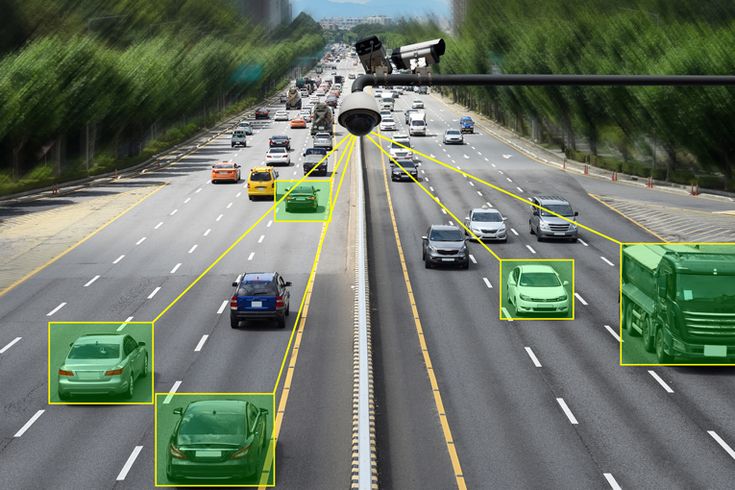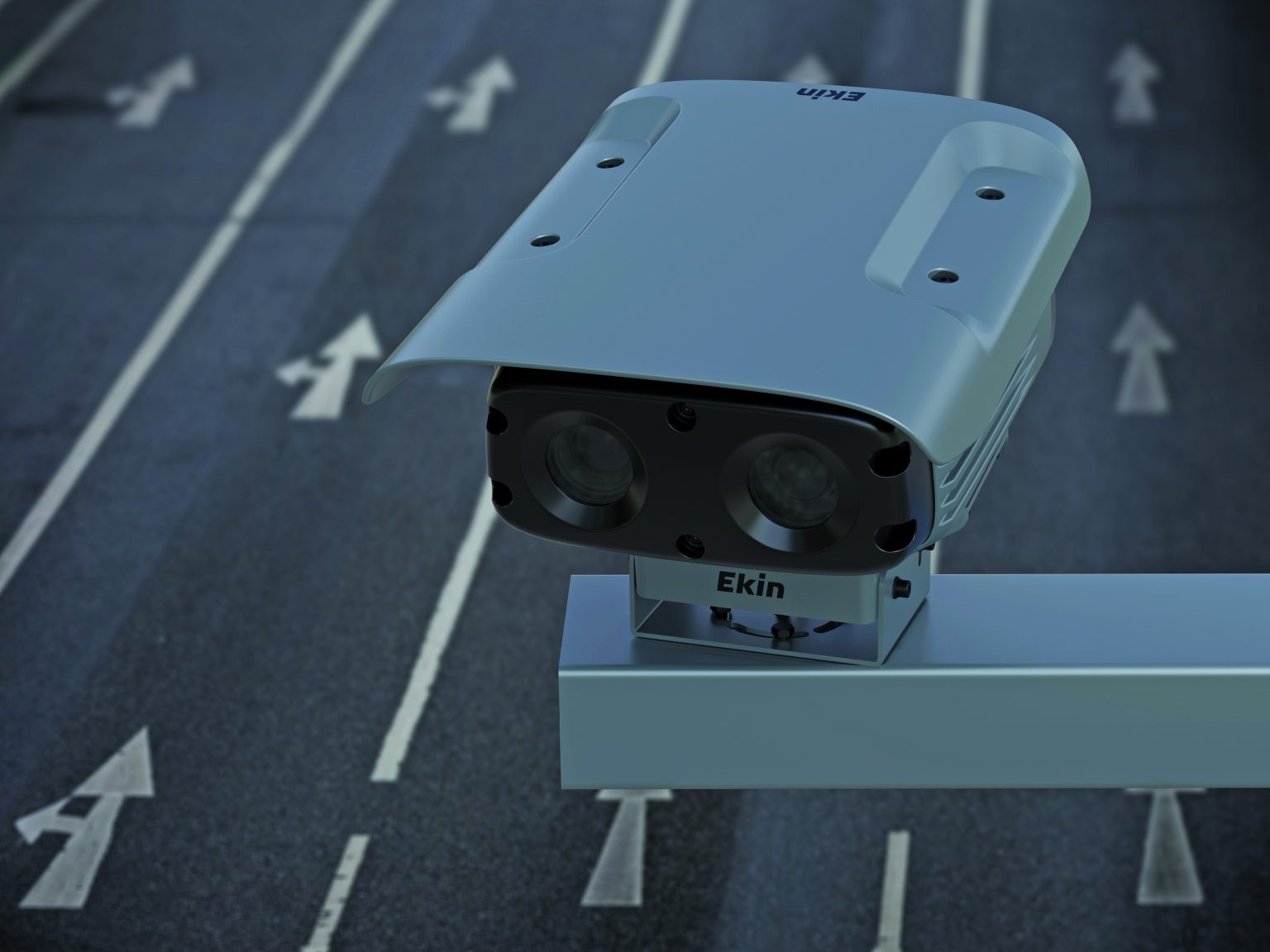Real-Time Overspeed Alerts vs Automated Enforcement
Aug 20, 2025 Resolute Dynamics
Speeding is one of the biggest causes of road accidents. Whether you’re managing a fleet of delivery vans or operating heavy-duty trucks across regions, keeping your drivers within legal speed limits is crucial—not just for safety, but for compliance and cost control too.
So what works better: real-time overspeed alerts or automated enforcement systems?
Let’s break them down and explore the pros and cons of each, especially from a fleet safety perspective. By the end, you’ll know which system fits your operations better—and how technologies like AI telematics and intelligent vehicle control are changing the game.
What Are Real-Time Overspeed Alerts?

Real-time overspeed alerts are smart warnings that notify a driver the moment they drive faster than the legal or pre-set speed limit. These alerts originate from intelligent vehicle monitoring systems that integrate multiple technologies, including GPS tracking, road speed databases, and, in many advanced systems, AI-driven camera inputs.
The main idea is simple: Catch the speeding before it becomes dangerous. These alerts give drivers a chance to slow down instantly—before a ticket is issued, or worse, before an accident happens.
Behind the Scenes: How Do Real-Time Alerts Work?
Real-time alerts are not just about speed. They are part of a vehicle telematics ecosystem, often installed in fleet vehicles like delivery trucks, taxis, school buses, or long-haul carriers. Here’s how they function:
1. Speed Monitoring
A vehicle has built-in sensors or an On-Board Diagnostics (OBD-II) system that constantly tracks how fast the vehicle is going. This data is transmitted to a Vehicle Control Unit (VCU).
2. Speed Limit Reference
Using high-definition digital maps, road sign recognition cameras, or cloud-based road databases, the system identifies what the local speed limit is for the exact GPS location.
In modern setups, AI-based vision systems read actual speed limit signs on the road in real-time. This is useful in areas where speed limits change often—like construction zones or school areas.
3. Real-Time Decision-Making
If the vehicle’s speed goes above the allowed limit, the system instantly triggers an alert. This could be:
-
A sound or beeping tone inside the vehicle
-
A visual flash or dashboard message
-
A push notification to the fleet manager’s dashboard
-
A haptic signal like seat vibration in premium vehicles
All of this happens in milliseconds—powered by edge computing, which processes data locally within the vehicle, instead of relying on a slow internet connection.
Why Real-Time Alerts Matter for Fleet Safety
Real-time overspeed alerts are not just helpful—they’re essential for safe driving in modern fleets. Let’s break down the unique benefits:
1. Proactive Safety, Not Reactive Penalty
Unlike automated enforcement (which fines drivers after a violation), real-time alerts prevent the problem before it happens. This proactive approach saves lives and keeps vehicles accident-free.
2. Improves Driver Behavior Over Time
Drivers become more cautious when they know their behavior is being tracked live. These alerts can be part of a larger driver scoring system, helping fleet managers coach and reward safe drivers.
3. Customizable for Different Use Cases
Fleet owners can set internal speed policies. For example, even if the road allows 100 km/h, a school bus company can program alerts to go off at 80 km/h.
4. No Dependence on Traffic Cameras
Real-time alerts don’t rely on external enforcement infrastructure like government-run speed cameras. This makes them ideal for remote regions or developing markets where traffic enforcement is limited.
5. Reduced Fuel Usage and Maintenance Costs
Speeding leads to aggressive driving, which wears out tires, brakes, and engines faster. By staying within safe speed limits, fleets save on fuel and reduce vehicle wear and tear.
6. Supports Insurance and Legal Compliance
Telematics data from overspeed alerts can be used to prove safe driving habits, support insurance claims, or even reduce insurance premiums under fleet safety programs.
Real-World Example: How a Logistics Fleet Uses It
A delivery company in the UAE installs Resolute Dynamics’ smart alert system in its trucks. The system reads the speed signs on Sheikh Zayed Road, cross-checks with GPS speed, and alerts drivers when they go even 5 km/h over the limit. If the same driver gets multiple alerts in a week, the system sends a flag to the fleet manager for coaching. Within two months, speeding incidents drop by 60%, and fuel efficiency improves.
What is Automated Enforcement?

Automated enforcement is a traffic safety method that uses technology to detect and punish traffic violations—especially speeding—without human involvement. Unlike real-time alerts that warn the driver to slow down, automated enforcement catches the offense after it happens and usually results in a fine or penalty.
This system is widely used by governments and municipalities to enforce road laws and improve safety. It works through a network of cameras, radars, and sensor systems that track vehicles on roads, especially in high-risk zones like school areas, intersections, and highways.
How Does Automated Speed Enforcement Work?
Let’s break it down step by step:
1. Speed Detection
The system uses radar detectors, laser-based LIDAR, or ground sensors to calculate the vehicle’s speed as it passes through a monitored zone.
2. License Plate Recognition
If the vehicle is going over the speed limit, a high-resolution camera captures the number plate using Automatic Number Plate Recognition (ANPR) technology.
3. Violation Processing
The system creates a violation report with:
-
Date and time of offense
-
Location coordinates
-
Captured vehicle speed
-
Legal speed limit at that location
-
Image of the vehicle and number plate
4. Issuing the Fine
This report is automatically sent to the traffic authority’s back-end system. The vehicle owner then receives a fine notice by post, SMS, email, or through a traffic app. In some countries, points are added to the driver’s license.
Technologies Behind Automated Enforcement
-
Fixed Speed Cameras – Installed on poles or gantries along highways
-
Mobile Enforcement Vans – Equipped with portable speed radar and cameras
-
Red-Light Cameras – Catch drivers who speed through intersections
-
Average Speed Cameras – Measure speed across two points and calculate if the driver was too fast
Many countries now use cloud-based ticketing systems, allowing authorities to manage violations in real time and store records digitally for court or public access.
Common Locations Where It’s Used
-
Urban highways and expressways
-
School zones
-
Toll roads and bridges
-
Red-light intersections
-
Accident-prone black spots
Advantages of Automated Enforcement
1. Consistent and Unbiased
Cameras don’t get tired or distracted. They monitor traffic 24/7 and apply the law evenly to all drivers.
2. Reduces Police Workload
It frees up law enforcement officers from standing on the road with speed guns or stopping vehicles manually.
3. Proven to Reduce Speeding
Studies in countries like Australia, the UK, and UAE show that automated enforcement lowers average speeds and reduces crash rates in monitored areas.
4. Public Safety Tool
It’s not just about fines—it’s about creating a culture of caution. People tend to drive slower in zones with visible camera signage.
Drawbacks and Criticisms
Despite the benefits, automated enforcement systems also have some real-world challenges:
1. Delayed Feedback
Drivers don’t get warned in the moment. They may not realize they were speeding until they receive a fine days or weeks later.
2. No Behavior Correction
There’s no coaching or learning process. It’s punishment without education, which doesn’t help long-term change.
3. False Positives
Sometimes, environmental conditions (fog, rain, shadows) or technical errors can lead to incorrect fines. Motorcycles, emergency vehicles, or foreign plates may not be accurately recognized.
4. Public Backlash
In many places, drivers feel automated enforcement is more about revenue generation than public safety. This creates resistance and complaints about fairness.
Global Examples of Automated Enforcement in Action
-
Dubai, UAE: RTA uses radar-based cameras like “Al Burj” and AI-backed systems to monitor speed and lane violations.
-
London, UK: Uses average speed cameras across the M25 and inner city to reduce dangerous driving.
-
Singapore: Enforces strict speed limits with high-definition roadside cameras and mobile units.
-
United States: Many cities use red-light and speed cameras, though laws vary by state.
Comparison with Real-Time Alerts
| Feature | Automated Enforcement | Real-Time Overspeed Alerts |
|---|---|---|
| Timing | Post-incident (after the fact) | Instant (during the violation) |
| Who Uses It | Governments, traffic police | Fleets, private companies |
| Goal | Punishment | Prevention |
| Data Ownership | Government agency | Fleet manager / telematics system |
| Driver Behavior Improvement | Low | High (through coaching) |
| Legal Consequences | Fines, points, license issues | Usually internal alerts |
Where Does It Fit in a Fleet Safety Strategy?
For private fleet operators, automated enforcement is passive—it happens externally and is outside their control. It can still be useful as a compliance check or evidence tool, but it does not offer any real-time safety advantage.
This is why many modern fleets combine both systems:
-
Real-time alerts to help drivers adjust on the spot
-
Automated enforcement to ensure accountability when alerts are ignored
Key Differences at a Glance
| Feature | Real-Time Alerts | Automated Enforcement |
|---|---|---|
| Timing | Instant and proactive | Delayed and reactive |
| Who Controls It | Fleet operator or manager | Government or authority |
| Impact on Driver Behavior | High—can correct in real time | Low—only after the fact |
| Customization | Fully customizable | Fixed, based on location |
| Cost | One-time hardware & software | Ongoing fines or fees |
| Integration | Easy with fleet systems | Limited or none |
Use Cases: When to Use What
Real-time alerts are best for:
-
Commercial fleets
-
Cross-border operations with changing speed limits
-
Regions where enforcement is weak or inconsistent
-
Internal compliance monitoring
Automated enforcement works well in:
-
Urban areas with heavy traffic and strict regulations
-
Public safety enforcement
-
Law-based violation tracking
But in many cases, a hybrid approach works best—especially in smart cities and modern logistics operations.
How Resolute Dynamics Leads the Way in Speed Control
Resolute Dynamics offers a powerful mix of AI-driven safety technology and fleet intelligence. Their smart control systems do more than just monitor speed. They actively manage it based on road conditions, fleet policies, and predictive risk analytics.
Key Features from Resolute Dynamics
-
AI-powered ADAS (Advanced Driver Assistance Systems)
-
Real-time vehicle telematics with speed limit integration
-
Customizable alert settings based on region or route
-
Data-driven driver coaching
-
Predictive modeling using machine learning to prevent risky behavior
With over 200,000 connected vehicles across the UAE, MENA, and Asia, Resolute Dynamics is shaping smarter, safer roads.
Why Real-Time Alerts Offer a Big Advantage for Fleets

-
Instant Behavior Correction
Drivers know right away when they’re speeding and can adjust instantly. -
Cost Savings
Avoid fines, reduce fuel usage, and lower accident claims. -
Better Insurance Outcomes
Real-time speed data can support insurance negotiations and claim defense. -
Driver Accountability & Coaching
Data from alerts helps train drivers over time. -
Fleet Compliance
Stay within legal and internal safety guidelines.
Challenges and What’s Next
No system is perfect. Some challenges with real-time alerts include:
-
Alert fatigue: Too many warnings can overwhelm drivers
-
False alerts: If GPS maps are outdated, alerts may trigger incorrectly
-
Tech costs: Upfront investment in hardware and software
But the future is promising. AI is making alerts smarter by:
-
Reducing false positives
-
Adjusting thresholds based on driver history
-
Integrating with autonomous braking or adaptive cruise control
As more cities invest in intelligent transport systems (ITS), we’ll likely see real-time alerts and automated enforcement merge into one seamless ecosystem.
Conclusion
When it comes to fleet safety, real-time overspeed alerts offer more control, flexibility, and driver engagement. Automated enforcement may serve its purpose in law enforcement, but it’s reactive by nature.
If your goal is to reduce accidents, coach drivers, and stay compliant—especially across multiple regions—then real-time alerts are the better choice. And if you’re using platforms like Resolute Dynamics, you’re already on the path to smarter, safer journeys.
FAQs
What is the difference between overspeed alerts and automated enforcement?
Overspeed alerts notify drivers instantly when they exceed speed limits, while automated enforcement catches violations after they happen and issues fines.
How do real-time speed alerts improve fleet safety?
They help drivers correct their behavior on the spot, prevent accidents, and allow fleet managers to track and improve driving habits.
Can AI replace automated speed enforcement systems?
AI can’t replace law-based enforcement, but it can reduce the need for it by preventing speeding before it happens.
Is telematics legal proof in traffic incidents?
Yes, telematics data can be used as evidence in court or with insurance providers, depending on regional regulations.